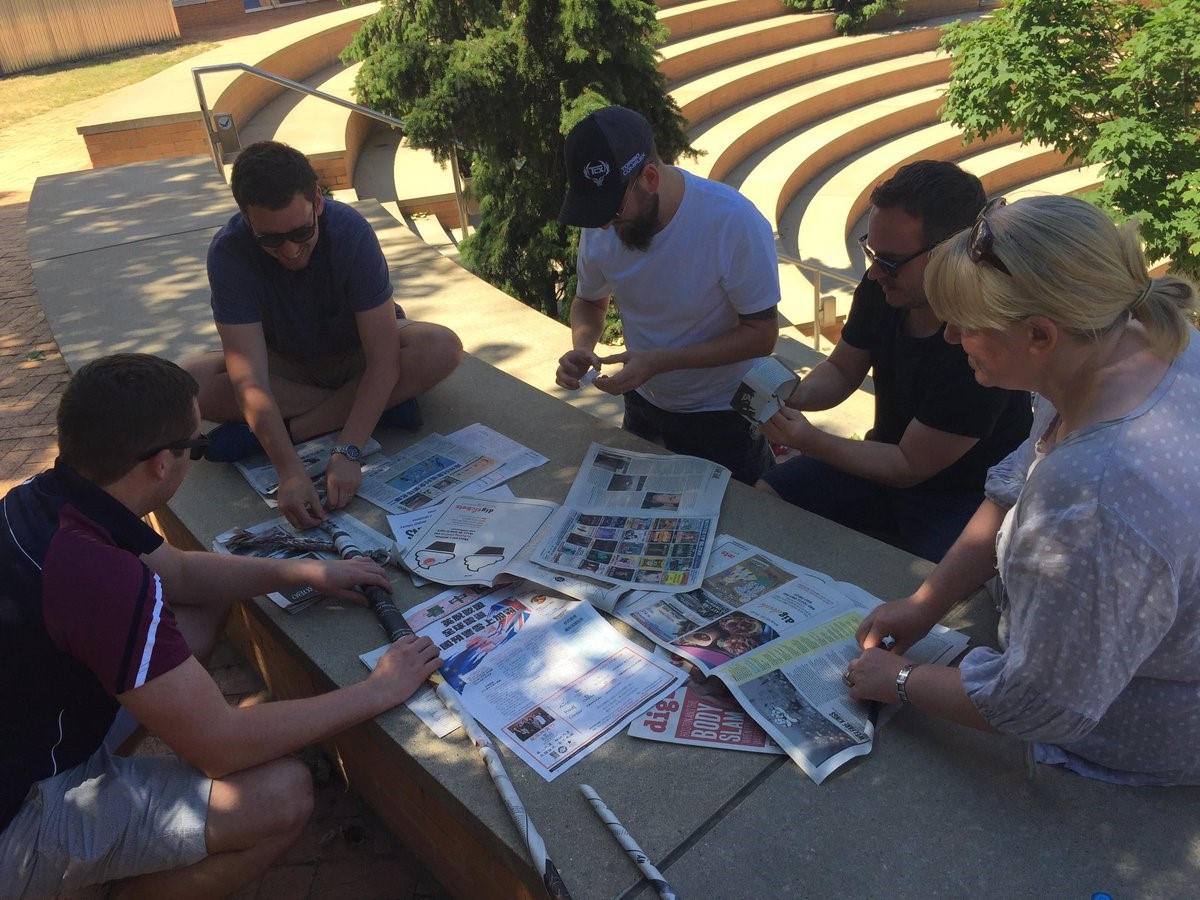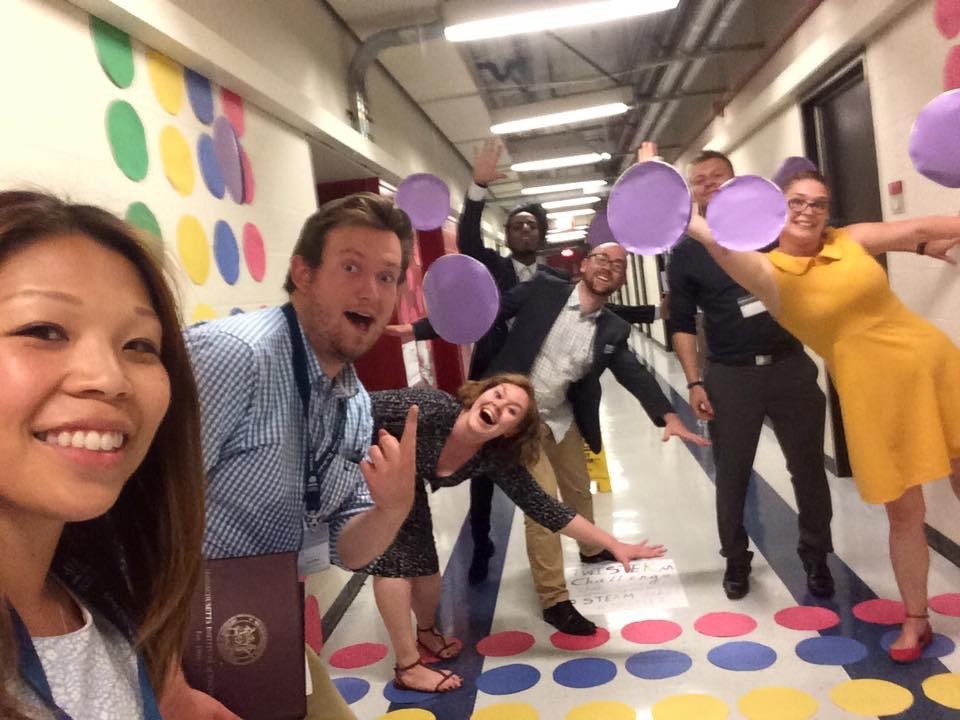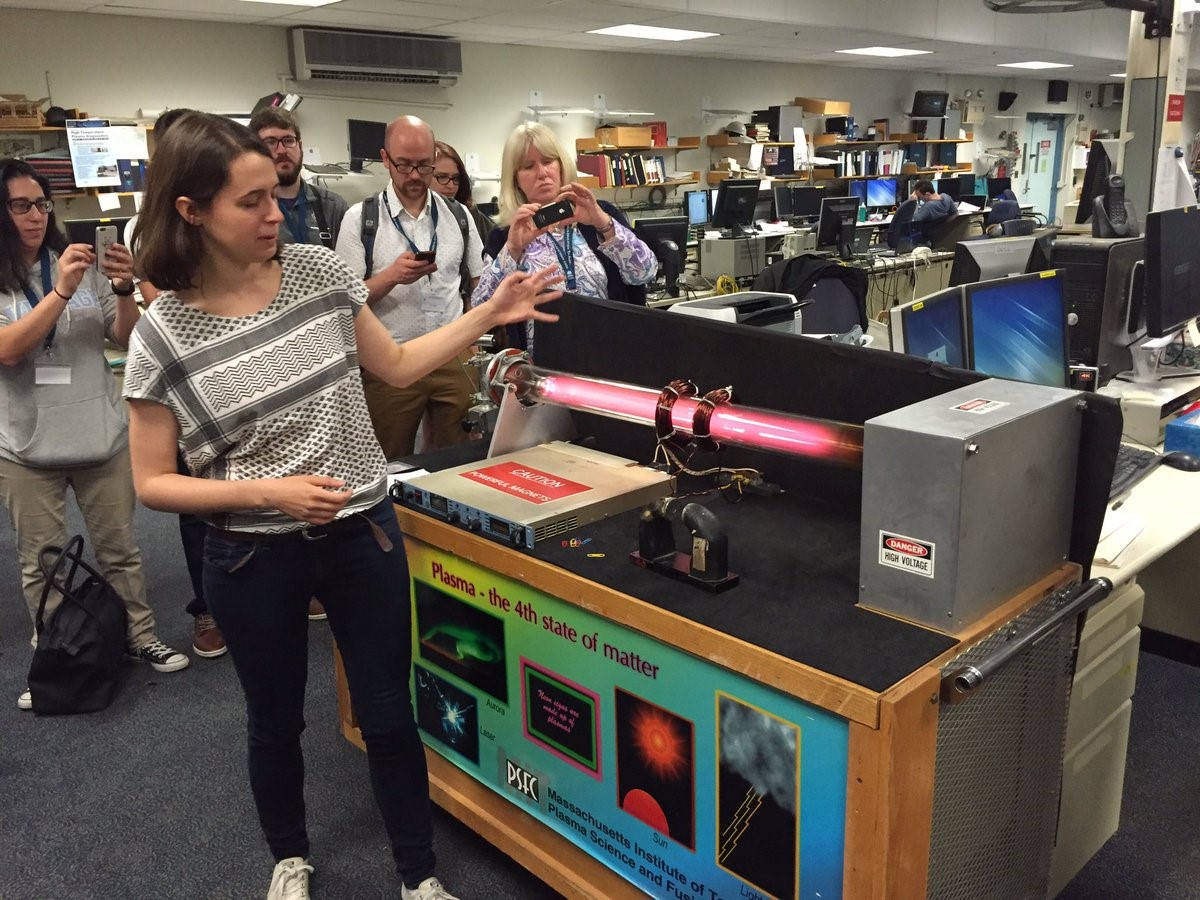Learn from the Best in STEAM
A vital element to Nord Anglia Education's new approach to teaching STEAM subjects (science, technology, engineering, art and math) is exposing teachers to the forefront of discoveries and research in science and technology. Find out what our teachers learned in a week of STEAM immersion at MIT.
A vital element to Nord Anglia Education's new approach to teaching STEAM subjects (science, technology, engineering, art and math) is exposing teachers to the forefront of discoveries and research in science and technology. Find out what our teachers learned in a week of STEAM immersion at MIT.
In July, 50 Nord Anglia teachers around the world spent one week at MIT learning about everything from nuclear fission to aeronautics, to mixing electronic music among other things. Inspiring teachers by exposing them to the cutting edge of STEAM subjects means that they can bring this new knowledge to their own students. We sat down with Science Specialist Tom Collins to talk about this life-changing experience at MIT.
How do you think this new approach to teaching STEAM will benefit your students?
STEAM is something I have been passionate about for a long time. It takes the idea of STEM and intertwines it with the arts. Soon engineering solutions become works of art, statistics become impactful infographics, and the scientific method becomes poetry. The arts are intrinsically linked to STEM, why Pythagoras discovered the beauty of the golden ratio that influenced many feats of engineering and art in the ancient work. Just look at Fibonacci sequences in nature and you will see how science, engineering, technology and math follow rules governed by nature that are expressed as works of natural art.
Sharing this with students will embolden them to take risks, make mistakes and get messy. It will ensure that they become creative problem solvers as they head into an uncertain future.

Nord Anglia teachers get creative with digital music. Through hands-on exposure, they learn about music production and tricks of mixing decks.
Can you explain what you learned during the professional development week at MIT? What were the workshops like?
During the professional development week we had a programme of workshops, lectures and talks organised by MIT which really broadened our horizons, broke frames and nudged our thinking. We learned about nuclear fission, plasma fusion, and the amazing chemical properties of calcium carbonate and how it changes depending on the way it's deposited, to name just a few of the experiences. The workshops were hands on, lectures were interesting and lunches with luminaries, captivating.
The days began with breakfast, followed by morning lectures that showcased some of the cutting-edge research currently happening at MIT. Each lunch break was enhanced with a talk from an MIT luminary, including leading experts in their fields and even an astronaut! Afternoons were a mix of workshops and lectures. Towards the end of the week we were split into groups and challenged to find a creative solution to a problem.

Nord Anglia STEAM teachers are asked to find new uses for newspaper. This group of teachers makes fairground games out of old newspapers.
Are you excited about bringing what you’ve learned at MIT back to the classroom?
I know that everyone who left the professional development course is excited for the next stage of the collaboration and how it will affect their learning environments. I will be bringing back the philosophy of trial and error, failing forward and learn-by-doing. This will enable our students to become ever evolving learners in an ever evolving world.
This collaboration is one that will benefit all. By taking students to MIT in May, I know we will inspire our learners to think ambitiously about their careers. For the colleagues who attended the professional development course in July, the excitement and enthusiasm is still there. We will have many successes and we will no doubt fail forwards but, as I always tell my students, to fail is to take the first attempt in learning.
How did it feel to be going through a professional development course at MIT?
The week was fast paced, exhausting yet invigorating. Each day ended with a period of reflection and conversation. It was so refreshing to be stimulated at an undergraduate level again -- in particular the talk about their nuclear reactor and how students and staff at MIT use it for research. This talk was a perfect opportunity for us to experience what our students feel as we constantly push our expectations of them. It made apparent the plasticity of the human brain, and how it can stretch when it is challenged with difficult concepts. To quote MIT, this style of learning is “to drink from the firehose”.
What new idea that you learned from MIT are you most excited about showing your students?
During the week we were given a challenge to "hack" a hallway at MIT. A covert team struck at 11 p.m. and set up a giant game of Twister in the hallway. Each color related to one of the silos of STEAM (science, technology, engineering, art and math). We wanted to show how reaching out and connecting different areas of STEAM can be a challenge, but also great fun. It was a hit.
I'd like to showcase this to our students and staff, share with them MIT's hacker code and perhaps inspire a future generation of creative hackers.

Nord Anglia teachers hack STEAM subjects through a game of Twister at MIT. Traditionally, many schools teach science, technology, engineering, art and math separately. Through Nord Anglia’s collaboration with MIT, these subjects will be interdisciplinary and hands on.
What workshop resonated with you the most during your week at MIT?
The workshop that resonated with me the most was in fact a tour of the Plasma Fusion Science Center. Here we learned about how the whole center operated, and it really hit home with me how important the magnets being used here were. The reason it stuck with me was that I had just taught a unit about magnetism with my Year 3 classes and here I had a bigger picture of how we use magnets in cutting-edge scientific studies. It brought back to me the importance of good basic instruction and understanding in science, and how this scaffolds our students’ learning journey.

Libby Tolman, MIT plasma physicist, teaches Nord Anglia teachers in the Plasma Fusion Science Center. A tube filled with plasma, or ionised gas, can be used in the future as sustainable energy in cities.
What are your aspirations for your students as a science teacher and how does the professional development at MIT help those aspirations?
I am passionate, first and foremost, as a Science Teacher. I want my students to develop a love of the subject. Second to this is my dedication to developing STEAM. I want my students to see how these disciplines fit together for themselves. I know this will take time and a carefully planned learning journey. I am confident the professional development has energized all of those who took part. It gave us an opportunity to see just how powerful this collaboration can be for our learners, and this means we can be ambitious with our challenges for them.










